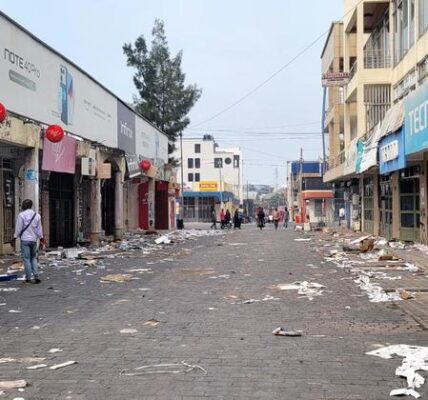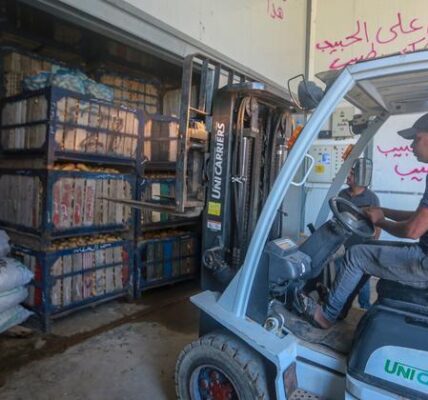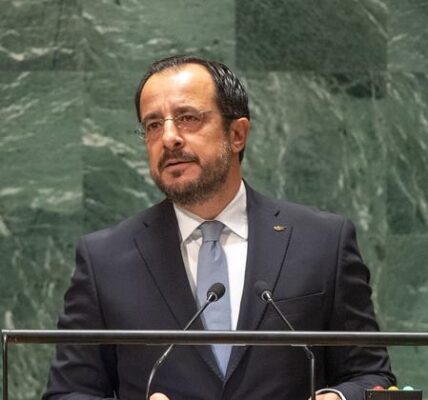As societies adjust to the effects of climate change, they are also establishing boundaries that can help regulate the impact of these changes.
Daniel Dickinson from UN News visited Madagascar before the United Nations Environment Assembly in Nairobi, Kenya on 26 February to learn about the locals’ resilience.
The village of Zanavo Fagnalenga, located on the southernmost point of Madagascar, is facing growing difficulties. After years of neglect, a succession of humanitarian emergencies, and the effects of climate change, the village, which is home to hundreds of people, is now living in poverty and struggling to survive in harsh conditions.
Small wood and grass triangular-shaped dwellings dot the dusty and arid landscape. A few villagers sell peanuts piled up in small rusty cans, and manioc are arranged in rows and available to anyone who can afford them.
A small portion of the available water is allocated for human use and sustaining a few crops along the edges of the community.
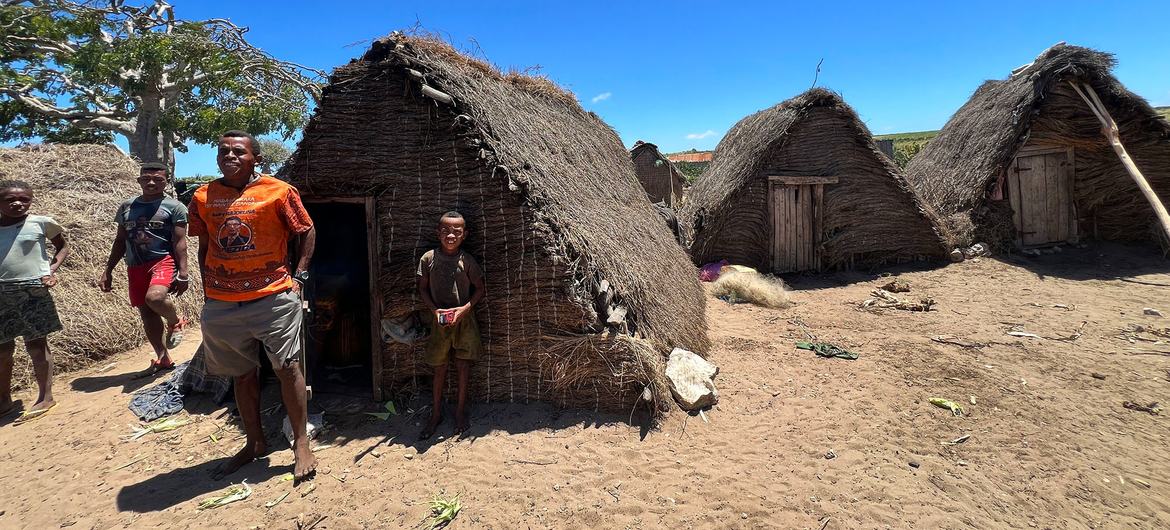
Individuals in the southern region of Madagascar are acquiring the skills and strategies needed to adjust to the effects of climate change.
Climate change intensifies weather’s impact
Since ancient times, the primary pursuits in this area have been fishing and farming. The locals have developed strategies to handle the variations in weather, such as the increasing strength of the March winds each year.
The Tiomena, also known as the red wind in Malagasy, comes in from the Indian Ocean and creates strong winds that pick up the red sandy soil on this once fertile shoreline.
According to Jean Christian Lahanbitoly, a leader in the fishing community, the Tiomena has greatly affected the lives of those living in coastal areas.
The Tiomena transports sand from the coastal hills to our village and distributes it inland. During its peak, it becomes challenging to work outdoors. This leads to financial struggles and deprivation of food and water.
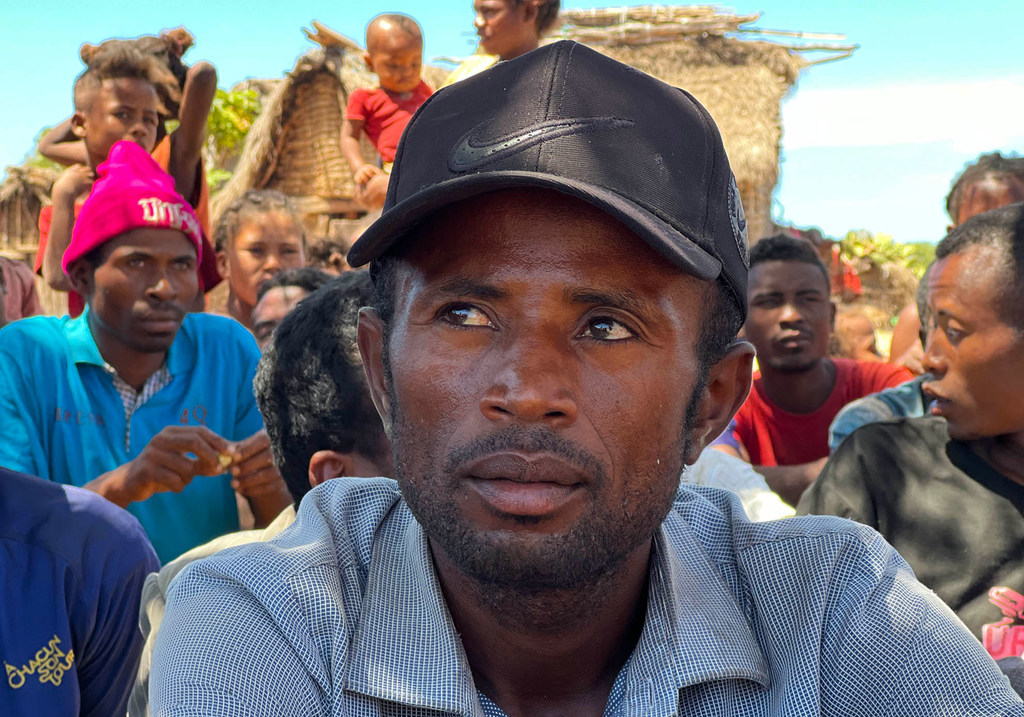
Jean Christian Lahanbitoly is both a fisherman and a respected member of his community.
The Tiomena has long posed challenges to rural communities in Maroalopoty and Maroalomainty. However, its impact has heightened as a result of climate change.
For years, the clearing of forests has caused numerous hillsides to become exposed and vulnerable to the powerful forces of wind. This has resulted in heightened erosion of the sandy soils that these communities rely on. As a result, the land is gradually being covered with sand, making it more difficult for the predominantly farming population to grow crops.
However, the village is suffering from another consequence of climate change – insufficient water supply.
“According to Mr. Lahanbitoly, farmers are facing great challenges in cultivating crops due to the intrusion of sand brought by the Tiomena, which is encroaching upon our land and village. The situation is further exacerbated by inadequate rainfall.”
According to the UN, Madagascar ranks fourth in the world for countries most affected by climate change. Farmers in the southern region of Madagascar are facing challenges in harvesting their dry crops, particularly maize, a traditional crop that requires ample water.
According to Mr. Lahanbitoly, there is a trend of people leaving villages such as Zanavo Fagnalenga and heading north in pursuit of more favorable agricultural conditions. The goal is to find better land and improve their standard of living, as many are struggling with food insecurity.
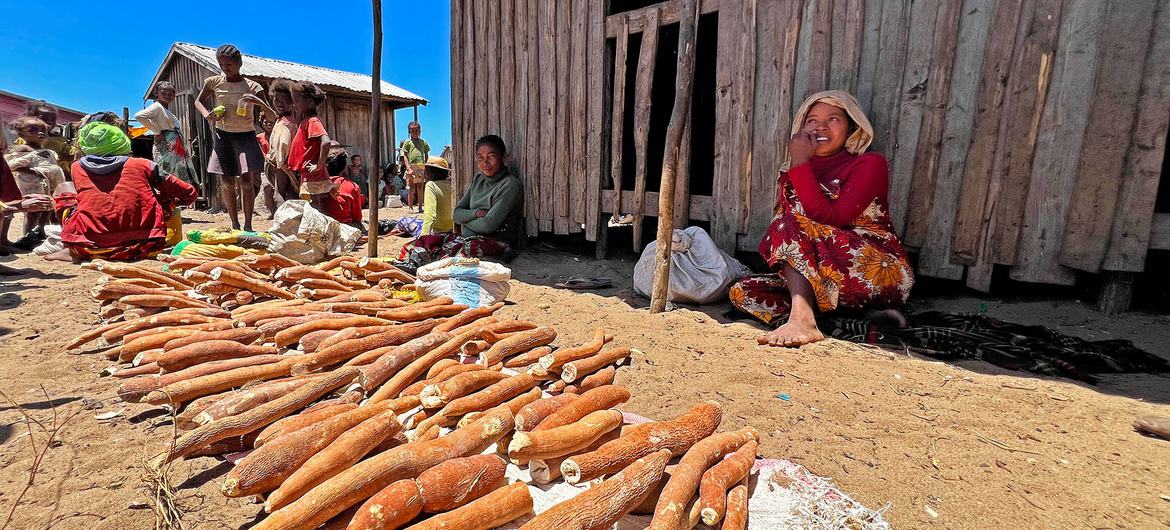
A female vendor sells crops in the rural area of Zanavo Fagnalenga.
I have a positive outlook on things.
“I have a positive outlook,” he stated, “however, the negative perspective is that without improvement, we will perish from starvation.”
The launch of a project focused on safeguarding the vulnerable coastal ecosystem and empowering local communities to support themselves has left Mr. Lahanbitoly feeling hopeful.
The main point centers on the modest sisal plant, which can withstand challenging conditions and is well-suited to drier climates.
When grown in a grid layout, the plant can aid in protecting the upper layer of soil and reducing erosion. This results in fewer sandstorms and increased potential for agricultural activities in Maroalopoty and Maroalomainty.
The rigid strands it creates can also be utilized for commercial purposes and made into rope and even clothing.
Lydia Monique Anjarasoa, a farmer in the area, shared that due to sandy conditions, the land had been unusable for a significant amount of time. However, the community has since been able to make use of the land by planting sisal plants. This has greatly benefitted the community.
The UNDP and government have supported the cultivation of sisal, cactus, and ipomoea, a type of vine that enhances soil stability and water retention.
People were given payment to sow the crop, which gave them a valuable source of income to use within their communities and ultimately helped to strengthen local economies.

Fabrice Mamitiana from UNDP.
A single plant has altered the terrain.
According to Fabrice Mamitiana of UNDP, the residents of this area are highly susceptible and have experienced a decrease in wealth due to declining harvests. The community is pleased that our efforts have provided job opportunities and halted the spread of sand through the planting of sisal. This has enabled them to continue cultivating on the remaining farmland, and despite limited rainfall, they were able to yield a small harvest.
Currently, agricultural workers and their loved ones are cultivating, consuming, and merchandising legumes, grains like millet and sorghum, and other crops. They are also becoming more able to withstand the progressively challenging conditions and are realizing, after several years, that they have a viable and long-lasting prospect in their fields.
Unfortunately, there are limited options available for them to alter the unpredictable precipitation. Governor Soja Lahimaro of the Androy region stated, “Lack of rainfall results in lack of production, leading to the depletion of resources for the people in this area and causing them to suffer from hunger.”
He clarified that there are immediate solutions available, but they are only temporary. Therefore, we are collaborating with the United Nations and the government to create a more sustainable long-term development plan.
Potential plans include expanding the cultivation of sisal to additional communities in the southern region, in order to increase their ability to adapt to shifting climate conditions and promote sustainable progress.
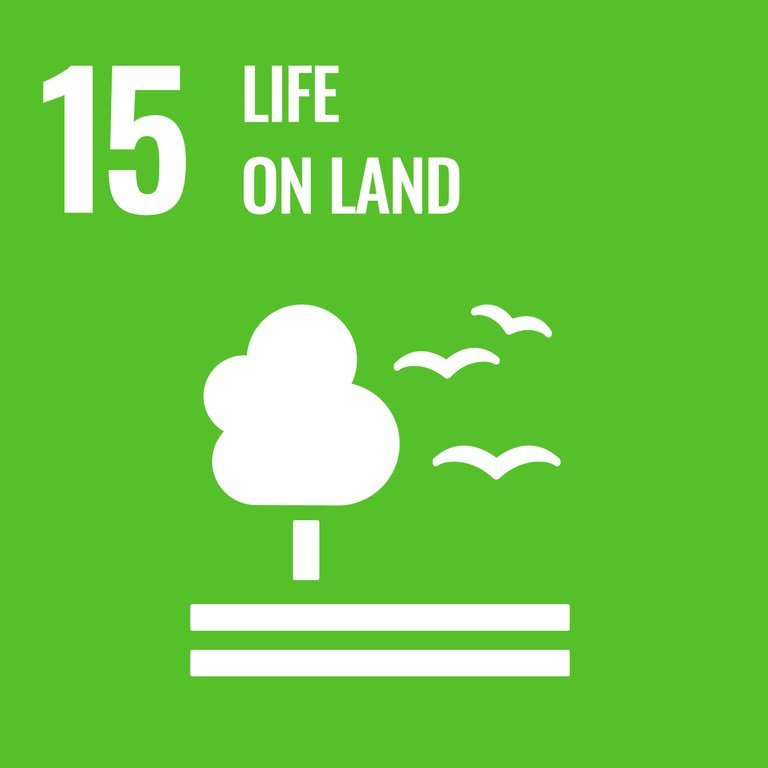
SDG 15
ENHANCE
Sustainable Development Goal 15: Enhance the sustainable use of ecosystems.
- .
Fight against desertification and rehabilitate damaged land and soil resources.
-
Make sure that mountain ecosystems are preserved in order to improve their ability to supply necessary benefits for sustainable progress.
-
Encourage the fair and equitable distribution of benefits and access to genetic resources utilization.
-
Stop illegal hunting and trading of endangered animals and address the demand and supply for illegal products derived from them.
-
Mobilize and acquire additional funding to protect and responsibly utilize biodiversity and ecosystems, as well as support sustainable management of forests.
The increasing destruction of forests, degradation of land, and loss of species are major risks to our planet and population.
Source: news.un.org

